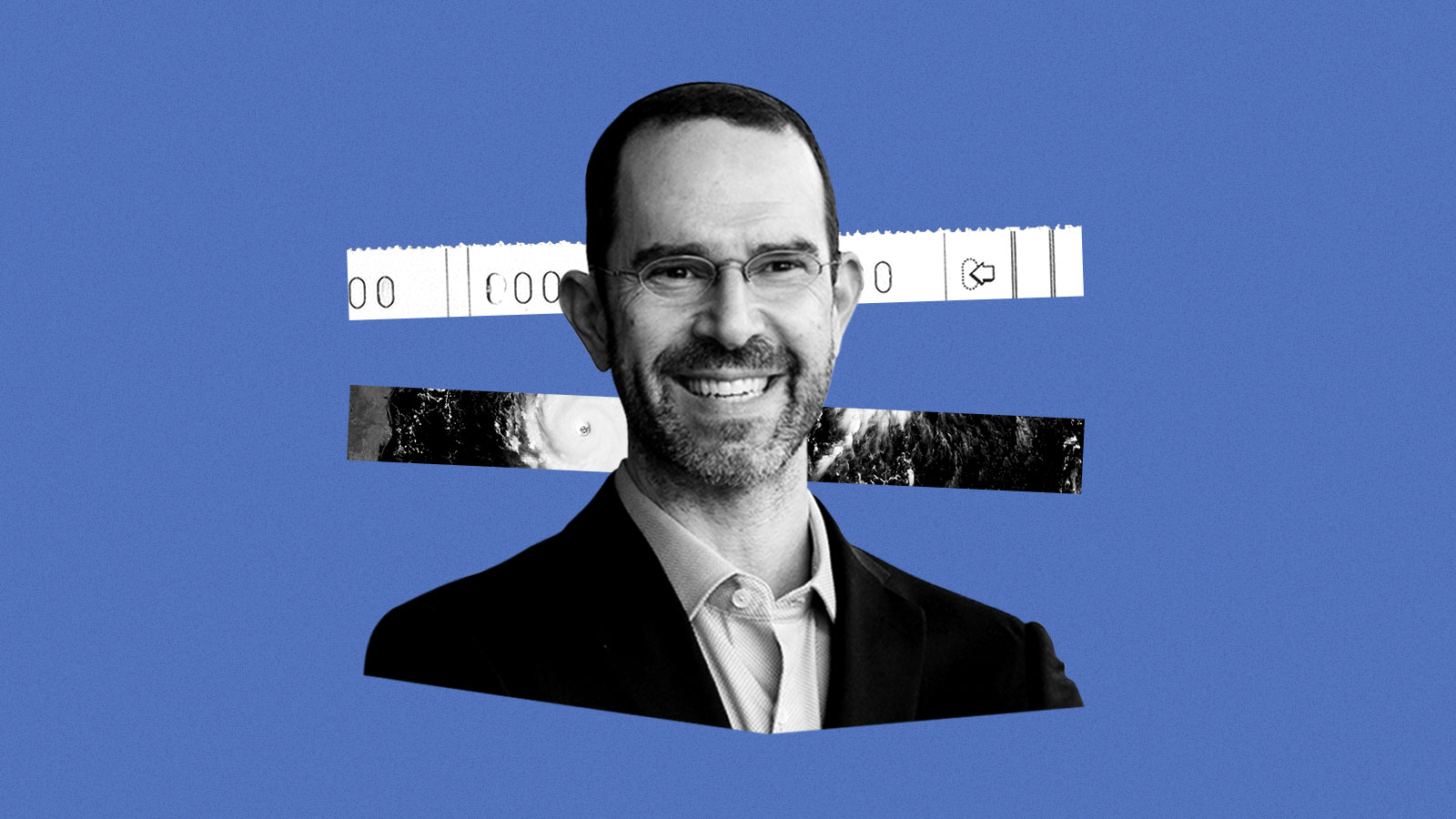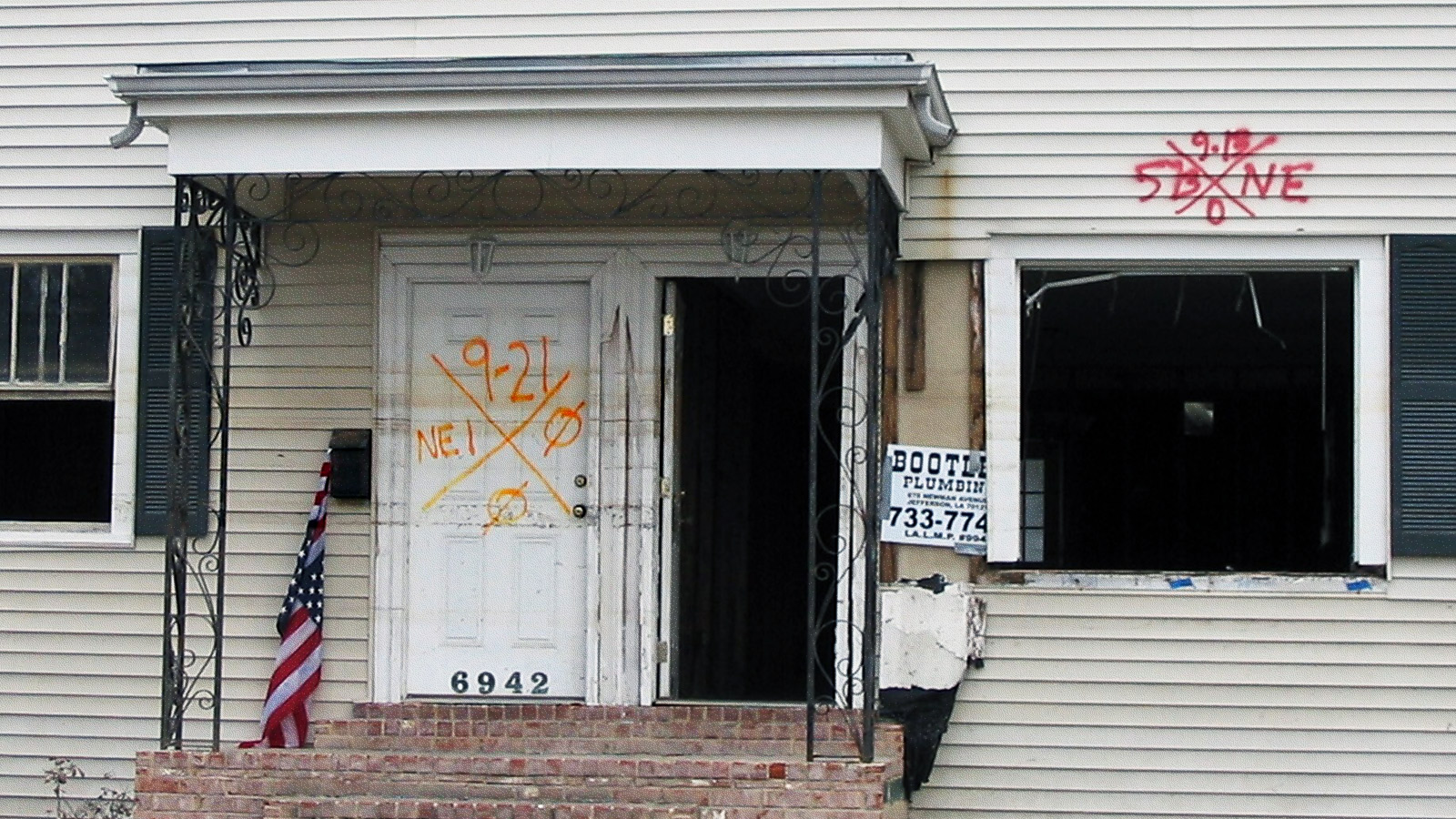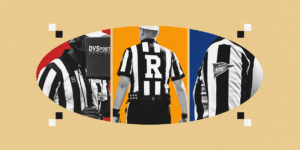
This story is part of state of emergencyA Grist series exploring how climate disasters affect voting and politics. It is published with support from the CO2 Foundation.
In the spring of 2005, Daniel Aldrich, a researcher, was completing his doctorate in Japanese energy politics at Harvard University. That summer, he moved to Louisiana with his wife and two young children and rented a house in New Orleans to start his first ever job in academia at Tulane University. The campus was bustling in late August as students moved into their dorms and teachers prepared for the first day of classes. The last Monday of that month was supposed to be Aldrich’s first day of teaching. He never reached the campus. Twelve feet of water turned his home, eight blocks from Lake Pontchartrain, into a swamp, destroying everything he owned, including his car, and sending his life in a totally new direction.
Hurricane Katrina made landfall in southeastern Louisiana on the morning of August 29, 2005 as a Category 4 storm, resulting in more than 1,500 deaths in three southern states and causing $300 billion in damage. In New Orleans, poor city planning and a lack of flood resilience made a bad situation worse. About 80 percent of the city was under water 48 hours after Katrina hit. It would take many months for the people who evacuated to come back. A portion of the population never returnedand the city still bears the scars of Katrina’s impact, and the recovery process – marred by bad politics, racism and a lack of foresight – that followed.
The Aldriches first evacuated to Texas, then moved back to Boston, where they stayed in an apartment rented for them by sympathetic friends and family. They watched on television as thousands of people, trapped in the Louisiana Superdome, begged for water and medical supplies. One close friend was evacuated from his roof by helicopter and dropped off at the airport, where there wasn’t enough food to go around.
Aldrich and his family did not go back to New Orleans for months, until that January. “That’s when we saw the horrors on the ground,” Aldrich said. On the walk from his home in the city to Tulane, little fountains of water shot out of the ground every few steps. The weight of the floodwaters crushed the city’s underground infrastructure. Finding a doctor was almost impossible. Grocery stores were out of stock. Abandoned boats blocked the streets. They didn’t last more than half a year. Aldrich got a job offer in Massachusetts, and the family went north again. In Boston, Aldrich’s children were tested for lead, a city requirement. Levels of the toxic metal in their blood tripled while they were in New Orleans, where floodwaters and post-hurricane demolition had swirled the lead in the paint coating many of the city’s nearby homes.

Courtesy of Daniel Aldrich
Katrina marked a turning point in Aldrich’s life and in his professional trajectory. He would spend the next two and a half decades researching the politics of disaster and disaster resilience, writing three books on the subject and become one of America’s leading disaster resilience experts. And he would soon find that epochal disasters like Katrina—which often represent an individual’s first interactions with the federal government—radicalize. That experience, his research found, can ultimately dictate political preferences and voter behavior.
Most importantly, Aldrich learned that survivors tend to become more civically involved after a disaster: They run for office, start community groups and show up at town meetings. Accustomed to sitting outside the research he was doing, Aldrich realized he had become a data point himself. “Hurricane Katrina destroyed my house, my car and everything I owned,” he said. “For me, it definitely changed my perspective.”
Grist spoke with Aldrich, now a professor of political science at Northeastern University, about his post-disaster experience, how climate shocks like hurricanes affect voters, and how Americans’ expectations of how the federal government should respond to a disaster, changed over time. This conversation has been condensed and edited for clarity.
Q. What happens, politically, to voters after a disaster? How does their behavior change?
A. There is a lot of interesting research on this question. I think there are two things we need to think about. One is, what happens in terms of voting itself? Do people vote more than they would in a normal year, not a disaster year or month?
Some people argue that civic engagement as a whole increases for survivors of disasters. They are more likely to vote, more likely to run for office, more likely to contact a member of Congress, more likely to engage in a meeting. There are many interesting before-and-after studies of survivors themselves.
But then, the second question is: When they do, who do they vote for, and then what happens?
Typically, most of us don’t really encounter the government except in moments like renewing our driver’s license or passport. But during a disaster, the vast majority of us start because we apply for some kind of help. Rather than being some abstract entity, there is now actually an agency in government that you interact with. You think, “Oh my God, I’ve been paying taxes since I was 22 or 23. Here’s my chance to get my money back.”
That’s the funny thing about being both a disaster survivor and a scholar involved in the study of disasters. My FEMA application was rejected in the first six months after Katrina. So it didn’t go well for me, but for other people who did well, you can get thousands of dollars. So either people are really pissed off, like me, because they didn’t get what they wanted. They want to punish the government. Or they are excited. They found something. The government actually came through.
Q. Given that spectrum of sentiment around disaster relief — where some victims get what they want, and others hit brick walls — what are the repercussions for politicians?
A. A lot of data has shown that people tend to show up in flooded areas vote in higher numbers for the incumbent party. Why is that? The party in power, if they are smart, start pumping in a lot of extra stuff. They pump extra staff assistance and assistance to businesses, to schools, or just road infrastructure. The levers of power allow the incumbent party to start dumping all kinds of, as we call it, pork barrel politics, or electoral goods, back into those communities.
If you look at the number of disaster declarations in an election year, it is statistically higher than in non-election years. Even a small disaster – a tank truck overturns and blocks I-40, there’s a fire in someone’s backyard and six people are left homeless – the party in power can take even this small thing and turn it into a bigger one , to get more help , get more systems going, specifically, more disaster declarations. It goes back to this idea that the party in power uses those levers of power during that short period of time to try to attract voters.
It is very deliberate. And you can say, “I really help everyone,” and that it’s impartial to defend yourself. You can say, “Well, look, I’ve got Democrats, some Republicans in my district. I want to make sure everybody’s safe.”
There are also people who have argued – again using flooding, because flooding is very common – that people are just as likely to punish the party in power as they are to support the party. When Katrina flooded my house, I was very angry. We had to fax in our FEMA application, and we were on our way to Houston and stop in, like Kinkos, and try to fax it in. I can’t tell you how frustrating that process was, and then it was rejected.
Q. Can we talk about FEMA? For many people, belief in or distrust of FEMA almost exists in its own political affiliation. The agency tends to bear the brunt of people’s anger, doesn’t it?
A. We imagine FEMA as a white knight: FEMA guys in tents handing out food. That’s not what they do. And there are very few FEMA employees to begin with. Their job is literally to say to a state or local representative, “Nice job, you built a hospital, now we’ll write a check to reimburse you.” That’s what they are, they’re a check-writing organization. But the expectations we had as a nation used to be very different.
Over 100 years ago in Boston, we had the Great Molasses Flood which killed nearly two dozen people. A big molasses tank broke and all that molasses went downtown, picked people up, and they drowned because you can’t breathe it, you can’t swim out of it. The bottom line is that when that happened, even if you would think, “OK, this is a good time for the national government,” nobody got involved except local organizations. It was all like churches, synagogues and mosques, and the local city office in Boston got involved, and the expectation that disasters were a local problem really continued until World War II.
And then by the 1950s and ’60s, when we had this whole “nuclear bombs are coming” Cold War thing, we went from Americans expecting the federal government to do nothing to now expecting a lot from the government. And that gap between expectation and reality began to put pressure on FEMA. It’s not really FEMA’s job to rebuild, that’s not what they do.
Q. It seems like a bad situation – that FEMA is not built for what people expect it to do, and also that climate change is making these extreme weather events happen more often and with more intensity.
A. The number of shocks that we have, the number of disasters that we have, are occurring more frequently, and the shocks that are occurring are more impactful. We have this data going back 100 years. If you look at things like hurricanes and other meteorological disasters, they increase in magnitude, so their damage increases. And also the frequency is increasing, which means that the gap between them is getting shorter so that local governments have less capacity. They [might be] dealing with Disaster 1 and Disaster 2 at the same time. So it’s absolutely true.
We need a new 21st century structure to deal with these new, more frequent and stronger disasters. How will we deal with the costs of climate change? We spend way too much money after the fact and not enough money before the fact. The idea that we need to build resilience to a shock is a very powerful one that we don’t do very well. Typically, we spend all the money, again, in election years and after the disaster.


